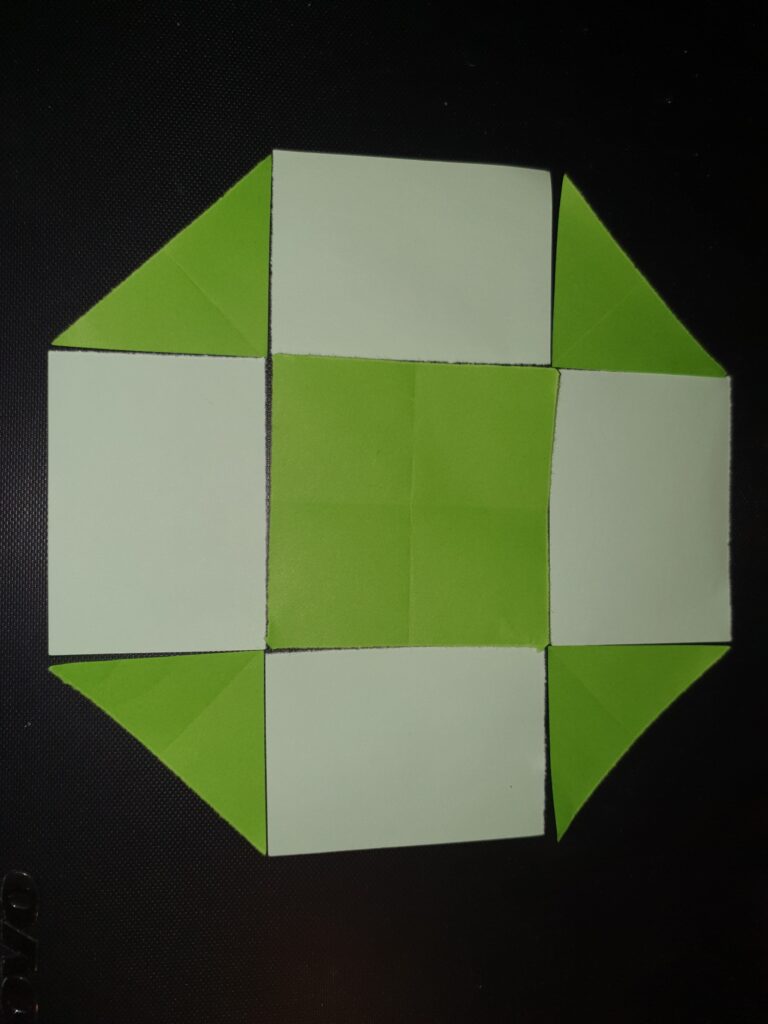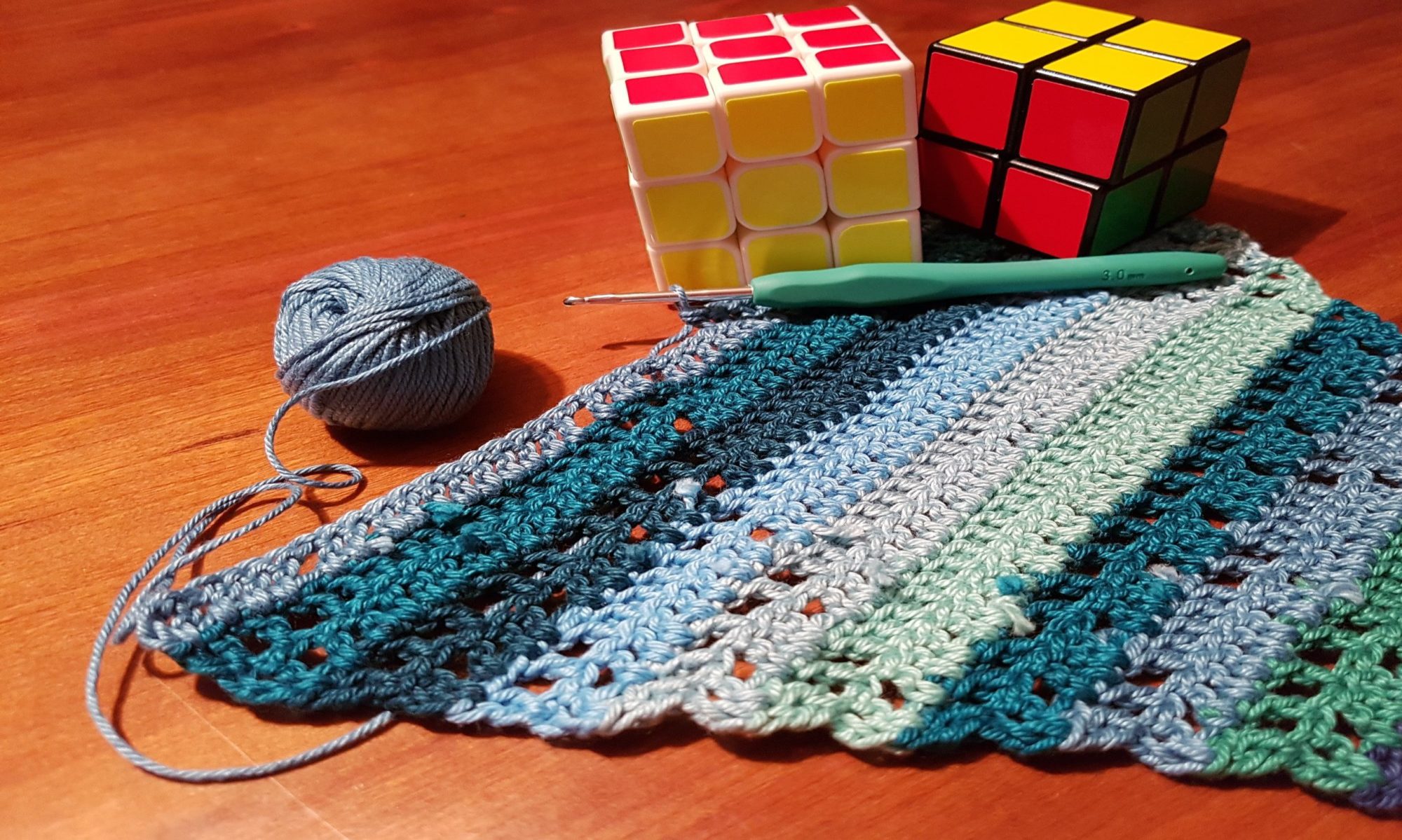An octagonal window
Back in September, when lockdown had lifted sufficiently to visit neighbouring towns and countryside for a walk and a look at slightly different scenery, I visited the town of Thetford with my partner. As we waited to cross a road I happened to glance up and notice this window:

There are many mathematical “What do you notice? What do you wonder?” questions that might be provoked by this octagonal window and the decorative brick pattern around it. Of particular interest to me was the way the octagon was made up of the smaller panes, and I wanted to see if I could recreate it using paper.


These photos show how I used three squares of paper (there was some paper left over) to recreate the octagon. The photo on the right shows how I rearranged the pieces to help me calculate the area of a regular octagon. Let’s suppose the octagon has side length 1 unit. That means the large square in the middle has side length 1, and the square at the top of the right hand picture has side length √2. Each of the pale rectangles has a long side of 1, so the rectangle in the right hand image has dimensions √2 and (√2+2). So the area of the regular octagon is √2(√2+2) which is 2+2√2.
